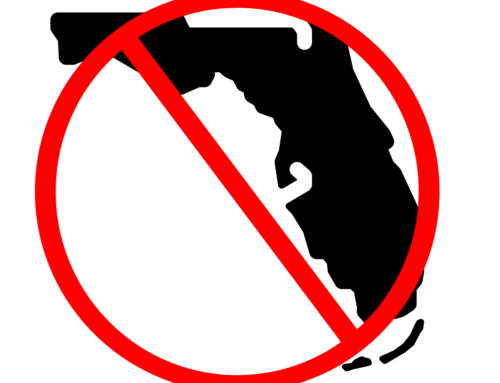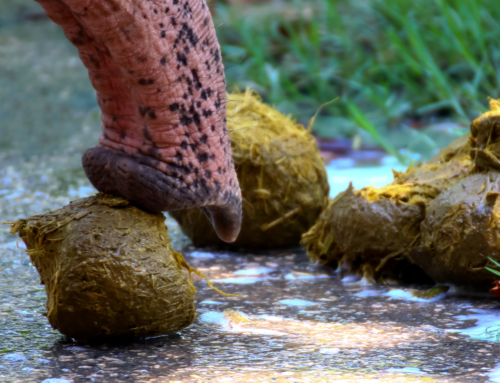
It’s no secret that traveling has a huge environmental impact. More travelers are attempting to look for companies that use sustainable practices and provide eco-friendly products and services. When you begin to search for more ethical ways to travel, greenwashing becomes a big problem in advertising. But, what exactly is greenwashing?
Table of Contents
What is greenwashing?
Greenwashing is exaggerating advertisements or using persuasive language to suggest that a company is better for the environment than they really are. This can be intentional or unintentional, but the results are still the same: travelers who are trying to make less of an impact on the environment are more likely to purchase a product or service with a green claim.
How greenwashing affects travel
With more tourists becoming eco-conscious, there is a push for companies to increase their environmental friendliness. This can include limiting their carbon footprint, switching to alternative sources of energy, or using recyclable or compostable materials. We can see this in various airlines that advertise their carbon emissions as lower than their competitors and the growth in popularity of eco-lodges compared to larger hotel chains. While some companies are truly changing their practices, others are using their skills in advertisement to take advantage of the green movement without changing anything at all. Unfortunately, a 2020 study by the European Commission found that 42% of companies that use green marketing on their websites were exaggerated, deceptive, or downright false. This number is even higher for American corporations.
How to identify and avoid greenwashing
Here are a few tips to help avoid greenwashing and false claims when planning your next trip. For a more in-depth guide, check out these 7 sins of greenwashing from the Green Business Bureau.
Always look for the data
This is a point I always harp on in my podcast. If a company, destination, or hotel is making an environmental claim, they should have data to back it. This can be factual evidence, though this can, of course, be exaggerated. Your best bet is to go with someone who has a third-party certification from a trusted source. These can include
- LEED
- ARC
- Green Business Bureau
- SITES
- TRUE
- PEER
- Green Business Certification Inc.
- Fair Trade USA Certification
- Green Seal
Not all green marketing is fake. It’s completely fine to advertise the good you are doing and how your company is changing for the better. What’s not ok is making unsubstantiated claims that give consumers a false impression of what they are purchasing.
Don’t fall for vague language
Phrases like all-natural, eco-friendly, organic, or other green claims have no scientific backing. Many of these words and phrases are used to catch the eye of a tourist or consumer without actually proving the claim. If a company is claiming they have a sustainable product, do they state what part of the product or service is eco-friendly? If not, their claim is too vague and may not be true.
All-natural doesn’t mean safe
Speaking of using the phrase “all-natural”; it does not mean that the ingredient or product is safe or good for the environment. Arsenic, mercury, and lead are all found in nature but are harmful or toxic to wildlife, especially if the chemical gets into the water. Products that use these ingredients can say they are “all-natural” because, well, they are.
Look past natural imagery
It’s simple, but it works. Using beautiful nature scenes in advertisements makes us feel good about purchasing it even if the company has made no environmental claims for it to be eco-friendly. Don’t let the images distract you from the message.
Examples of tourist greenwashing
There are a few common greenwashing tactics seen over and over again when traveling.
“Please reuse your towels to lower our carbon footprint”

You have probably seen a little note similar to this on your hotel mirror. This form of greenwashing makes guests believe the hotel is making an effort to limit its environmental footprint, but in reality, it is a distraction. The hotel did not have to change anything at all. In fact, they are doing less work by putting the responsibility on their guests. While reusing your towel to conserve water is good for the environment, if the hotel is not changing anything else to become greener, it means little and convinces guests that they are more eco-conscious than other hotels.
Highly advertising one positive thing they do and hiding the rest
A company can prove that they donate money towards fighting climate change or cleaning local beaches. However, they can also be contributing to these problems at the same time. Donating money is great, but it does not offset the negative impact their current practices have on the environment.
Paying extra for lower carbon emission flights
Once again, this puts pressure on the consumer rather than the company itself to make a positive environmental impact. Laws are beginning to be passed to limit the greenhouse gases emitted by transportation in order to help fight the current climate crisis. Some companies are using these mandatory changes as a green marketing tactic, advertising their lower carbon emissions, and raising their prices while still continuing harmful practices such as using insane amounts of plastic packaging and single-use plastics during each flight.
Promoting direct wildlife interaction
Areas that have abundant wildlife have more success promoting their green claims. I mean, why would these animals be hanging around if the location wasn’t environmentally friendly? However, using cute photos of wildlife or opportunities to feed or hold them is a major red flag. Direct interaction with wildlife has major repercussions on their natural behavior, physical health, and mental well-being. Using nearby wildlife for advertisement, especially when luring the animals in with food, gives tourists a false impression of the company. If, however, the destination is promoting ethical animal tourism and has rules in place to protect the local wildlife, it can be a major draw for travelers. See the difference?
What can I do?
Unfortunately, there are few to no companies out there that are 100% green and have no environmental impact. However, more of them are trying and altering their practices to become better. As a consumer, by simply trying, you are doing the best you can. If you happen to pay for a product or service that didn’t live up to its advertising, leave a review and let others know.
You can become a more ethical traveler by learning more about the do’s and don’ts of animal and wildlife tourism as well. Be sure to check out my animal tourism articles as well as my podcast where I take deep dives into some of the most popular activities and destinations around the world involving travel and wildlife.











Leave a Reply